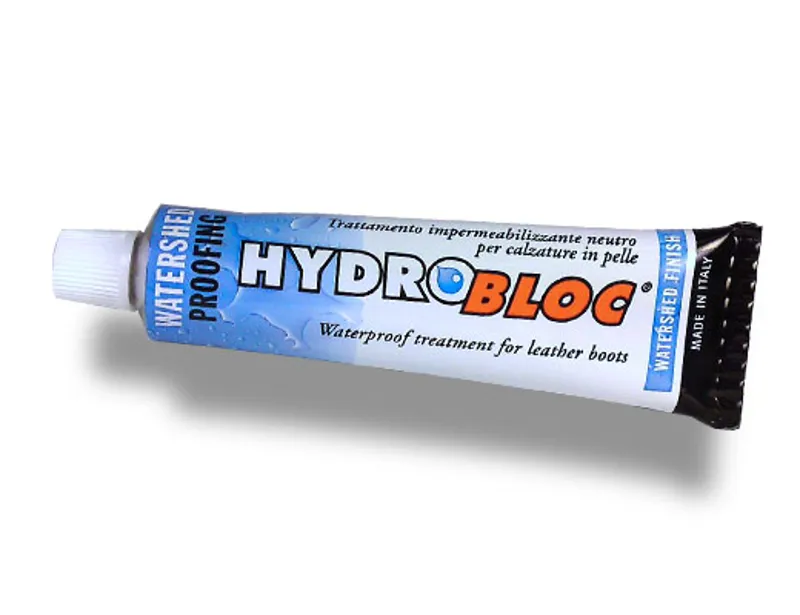Post
by lilcliffy » Fri Aug 28, 2015 7:42 am
Hey man,
Sorry for not responding to this sooner- my mind has been deep in plants, animals and manure (and unfortunately returning to my "real" job").
That Zamberlan cream is the exact stuff that I use religiously on all of my leather boots. I cannot say enough good stuff about it. It is water-based, designed to both condition and maintain leather- as well as keep it waterproof. There are a number of other manufacturers of similar products including Scarpa, Nikwax, etc. The only reason I prefer the Zamberlan product is because I have been able to get it easily (MEC), and at a good price.
To get maximum absorption you actually need to get the leather soaking wet. I do a thorough saturation about 2-3 times a season (the last one being before I store them). I wrap my boots in soaking wet towels and leave them in a utility sink/bath for a few hours. The absorption of the cream is amazing- when the leather is wet. Other than that- I spot treat the flex points of my boots every time I take them off- just to prevent eventual weakening and cracking of the leather. The full-saturation of the leather will make them completely waterproof and protect the leather from drying, cracking, and abrasion (even the typical abrasion caused by crust and vegetation).
The fact that it is water-based is important and confusing. The water-based products have at least two key attributes. One (as others have pointed out): it doesn't over-condition the leather and undermine its strength (i.e. the boot will maintain its stability). Two: it doesn't alter the characteristics of the boot's inner liner. On the second attribute- if your leather boots have an inner, non-leather liner (i.e. designed to improve comfort; wick moisture; insulate; water-proof; etc., etc.)- a water-based treatment will not damage the liner. For example- the Alpina Alaska has multiple inner liners and foam designed to: insulate; provide support and stability; a custom fit; moisture-wicking; and waterproof. Of course other manufactures have similar designs. An oil-based product will saturate these inner layers and they will fail to insulate properly; they will no longer be waterproof; and they won't breathe. In other words- your feet will be wet and cold.
Getting to your comments about the cream versus spray. The spray products are designed to waterproof suede, split leathers, nubuck, etc.- with a focus on preserving the aesthetic or cosmetic qualities of the leather (i.e. look and feel). The spray products will "waterproof" the leather (only temporarily)- but they will not condition the leather, nor protect it. I have never gotten more than a few hours of waterproofness out of a spray product. However- a cream product will completely change the aesthetic of a split leather- it will darken and become smooth (and your Alaskas will become red). To be honest- I am somewhat convinced that the split leather of a boot like the Alaska is actually purposely designed to encourage absorption of cream treatments (many mountaineering boots have a split-leather outer as well). As alternate example- my current pair of heavy-duty backpacking boots are thick nubuck. Although the nubuck is beautiful and tough- I find it frustratingly difficult to treat (if the boot didn't have a GTX liner I kinda doubt I would be able to keep it waterproof). Unconditioned full-grain leather (i.e. not nubuck), and split leather is much more absorbent.
Oil-based products will over-condition the leather (as others have said) making it soft and weaker (this may be desirable in an extreme boot like a heavy-duty leather logger's boot). For a ski boot it would turn it into a floppy slipper.
Products like "sno-seal" are made from beeswax. Beeswax is an excellent waterproof treatment- but it will not maintain and condition leather. Another note- and this is important: if you plan on re-soling your boots don't use a beeswax product. According to the manufactures and the cobblers- beeswax will prevent proper adhesion of glues, when putting on a new sole. And apparently- once you have applied beeswax- it is impossible to get rid of the residue. So if you've got a boot with a traditional welted sole- I would not recommend a beeswax-based treatment.
Cross-country AND down-hill skiing in the backcountry.
Unashamed to be a "cross-country type" and love skiing down-hill.


